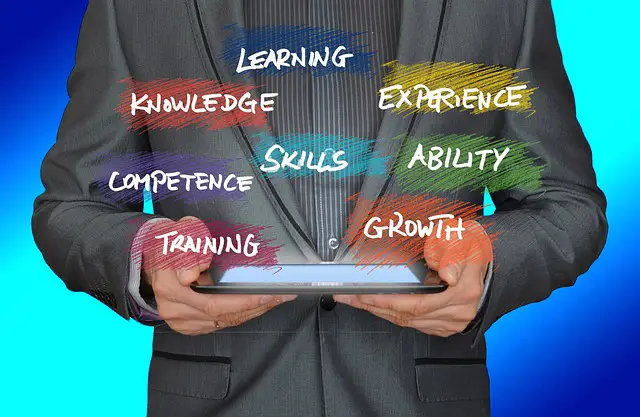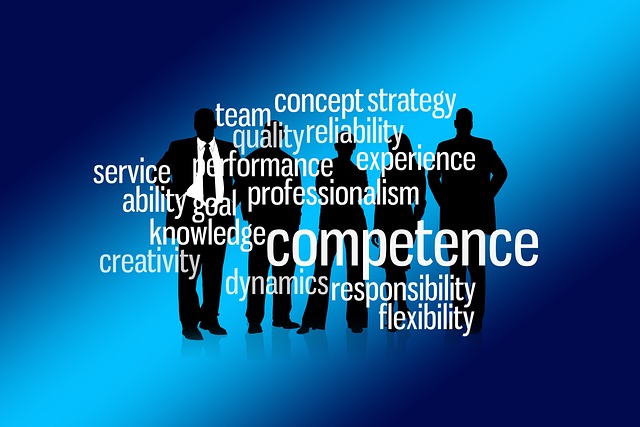Versatility and flexibility both refer to the ability to adapt to changing circumstances, but versatility implies being able to perform well in a variety of situations, while flexibility implies being able to bend or change easily without breaking.
What is Versatility?
(Photo by Vanessa Garcia)

Versatility refers to the ability to adapt to different situations, circumstances, or tasks. It is a highly valued trait in individuals, products, and systems, as it allows them to be effective in a variety of contexts and environments.
In individuals, versatility can manifest as a wide range of skills and abilities, as well as the capacity to learn and adapt quickly. A versatile person may be able to excel in a variety of roles or industries, or be able to pivot and adjust to changing circumstances with ease. This ability to be flexible and adaptable is highly sought after by employers, as it can help organizations stay competitive and respond to changing market conditions.
Similarly, in products and systems, versatility is often a key factor in determining their usefulness and success. For example, a versatile tool or appliance may have multiple functions or attachments, allowing it to be used in a variety of ways. A versatile software program may have a range of features and capabilities, making it useful for a variety of tasks or industries.
Versatility is a valuable trait that enables individuals, products, and systems to adapt and thrive in a variety of contexts and circumstances. It is an important factor in success and can help individuals and organizations to stay competitive and relevant.
What is Flexibility?
(Image by Gerd Altmann from Pixabay )

Flexibility refers to the ability to bend, stretch, or change in response to external forces or changing circumstances. It is a highly valued trait in individuals, organizations, and systems, as it allows them to adapt to changing situations and conditions.
In individuals, flexibility can manifest as physical or mental adaptability. Physically, a flexible person may have a wide range of motion in their joints, allowing them to move with ease and avoid injury. Mentally, a flexible person may be open to new ideas and able to adjust their thinking and behavior to accommodate different situations.
Similarly, in organizations and systems, flexibility is often a key factor in determining their success. An organization that is flexible may be able to respond quickly to changing market conditions or customer needs, while a rigid organization may struggle to adapt and fall behind. Systems that are designed to be flexible may be able to handle a variety of inputs or outputs, making them more versatile and adaptable.
Overall, flexibility is a valuable trait that enables individuals, organizations, and systems to adapt and thrive in a variety of contexts and circumstances. It is an important factor in success and can help individuals and organizations to stay competitive and relevant.
Versatility Vs. Flexibility – Key differences
Versatility and flexibility both refer to the ability to adapt and respond to changing circumstances, but there are some key differences between the two concepts:
Range of capabilities: Versatility typically implies a broader range of capabilities than flexibility. A versatile person or thing is able to perform effectively in a variety of situations or contexts, while a flexible person or thing may be able to adjust to changing circumstances without necessarily having a wide range of capabilities.
Adaptability: Flexibility often refers specifically to the ability to adapt to changing circumstances or requirements. A flexible person or thing is able to adjust to new situations or demands without breaking, whereas a versatile person or thing is able to perform well in a wide range of situations, regardless of whether those situations are new or familiar.
Level of specialization: Versatility often implies a higher level of specialization than flexibility. A versatile person or thing is able to perform well in a variety of specialized roles or contexts, while a flexible person or thing may be more generalized and able to adapt to a variety of different roles or contexts.
Scope of application: Versatility often implies a wider scope of application than flexibility. A versatile person or thing is able to apply their skills or capabilities to a wide range of tasks or contexts, while a flexible person or thing may be more limited in scope, and only able to adapt to specific changes or demands.
Versatility is often used to describe individuals or things that have a broad range of capabilities and can perform well in a variety of specialized roles or contexts, while flexibility is often used to describe individuals or things that are able to adapt to changing circumstances or requirements without necessarily having a wide range of capabilities or specialized knowledge.
How to improve your versatility and flexibility
Improving your versatility and flexibility can help you adapt more effectively to changing circumstances and become more resilient in the face of uncertainty. Here are some tips for improving your versatility and flexibility:
- Be open to new experiences: One of the best ways to improve your versatility and flexibility is to expose yourself to new experiences and challenges. This can help you build new skills and perspectives that will serve you well in a variety of contexts.
- Learn new skills: Another way to improve your versatility is to learn new skills that are outside of your current area of expertise. This can help you broaden your range of capabilities and become more adaptable to new roles and situations.
- Seek feedback and advice: Asking for feedback from others can help you identify areas where you can improve your versatility and flexibility. Seeking advice from others who have experience in different roles or industries can also help you broaden your perspective and develop new skills.
- Practice mindfulness: Mindfulness practices, such as meditation or yoga, can help you develop greater self-awareness and emotional resilience. This can help you stay grounded and focused in the face of changing circumstances.
- Embrace uncertainty: Learning to embrace uncertainty and ambiguity can help you become more adaptable and resilient in the face of change. Practice letting go of the need for certainty and focus instead on developing a growth mindset that values learning and adaptability.
By following these tips, you can become more versatile and flexible, and develop the skills and perspectives you need to thrive in a variety of contexts.
The advantages of a versatile person
A versatile person, someone who is able to adapt and excel in a variety of roles and situations, has many advantages:
- Increased opportunities: Versatile individuals have a broader range of skills and experiences, which makes them better equipped to take on a variety of roles and responsibilities. This means they have access to more opportunities in their personal and professional lives.
- Adaptability: Versatile individuals are able to adapt quickly to changing circumstances and are less likely to be thrown off course by unexpected events. This makes them more resilient in the face of adversity.
- Better problem-solving: Versatile individuals are able to approach problems from a variety of perspectives, which makes them more effective problem-solvers. They are able to see the big picture and identify creative solutions that others may miss.
- Enhanced creativity: Versatile individuals are more likely to have diverse interests and experiences, which can enhance their creativity and ability to think outside the box.
- Increased confidence: Versatile individuals are more likely to have a sense of self-efficacy and confidence in their abilities, as they have successfully navigated a variety of roles and situations.
The advantages of being a versatile person are numerous, including increased opportunities, adaptability, better problem-solving skills, enhanced creativity, and increased confidence.
The advantages of a flexible person
A flexible person, someone who is able to adapt and adjust to changing circumstances or demands, has many advantages:
- Improved productivity: Flexible individuals are better able to handle multiple tasks and shifting priorities, which can improve their productivity and efficiency.
- Adaptability: Flexible individuals are better equipped to handle unexpected events and changes in their environment, which can help them to remain calm and focused under pressure.
- Better work-life balance: Flexible individuals are able to make adjustments to their schedules and work arrangements to better balance their personal and professional lives.
- Enhanced problem-solving: Flexible individuals are able to approach problems and challenges with an open mind, and are more likely to consider a range of options and solutions.
- Better teamwork: Flexible individuals are better able to work with others and adapt to the needs and styles of different team members, which can improve their ability to collaborate effectively.
The advantages of being a flexible person are numerous, including improved productivity, adaptability, better work-life balance, enhanced problem-solving skills, and better teamwork. Being flexible can help individuals to navigate change and uncertainty, and can contribute to their overall success and wellbeing.
What is an example of versatility?
An example of versatility is a person who has a range of skills and is able to apply them effectively in different contexts. For instance, a person who is skilled in both writing and public speaking could use those skills to excel in a variety of roles, such as a journalist, a content marketer, a public relations specialist, or a motivational speaker. Similarly, a musician who is skilled in multiple instruments or genres of music could perform in a variety of settings and contexts. A versatile person is able to adapt and excel in different situations, using their skills and experiences to succeed in a variety of roles and contexts.
What is an example of flexibility?
An example of flexibility is a person who is able to adjust their plans or approach in response to changing circumstances or new information. For instance, a manager who is able to pivot a project in response to new market trends or emerging customer needs shows flexibility. Similarly, a worker who is willing to adjust their work schedule or take on new tasks to support their team or company is displaying flexibility. Another example could be a student who is able to adapt to a new learning environment or teaching style, and adjust their study habits or approach to achieve their academic goals. In general, flexibility involves a willingness to be adaptable, to consider different approaches or solutions, and to adjust plans or behaviors as needed to achieve desired outcomes.
Featured Image By – Gerd Altmann from Pixabay








